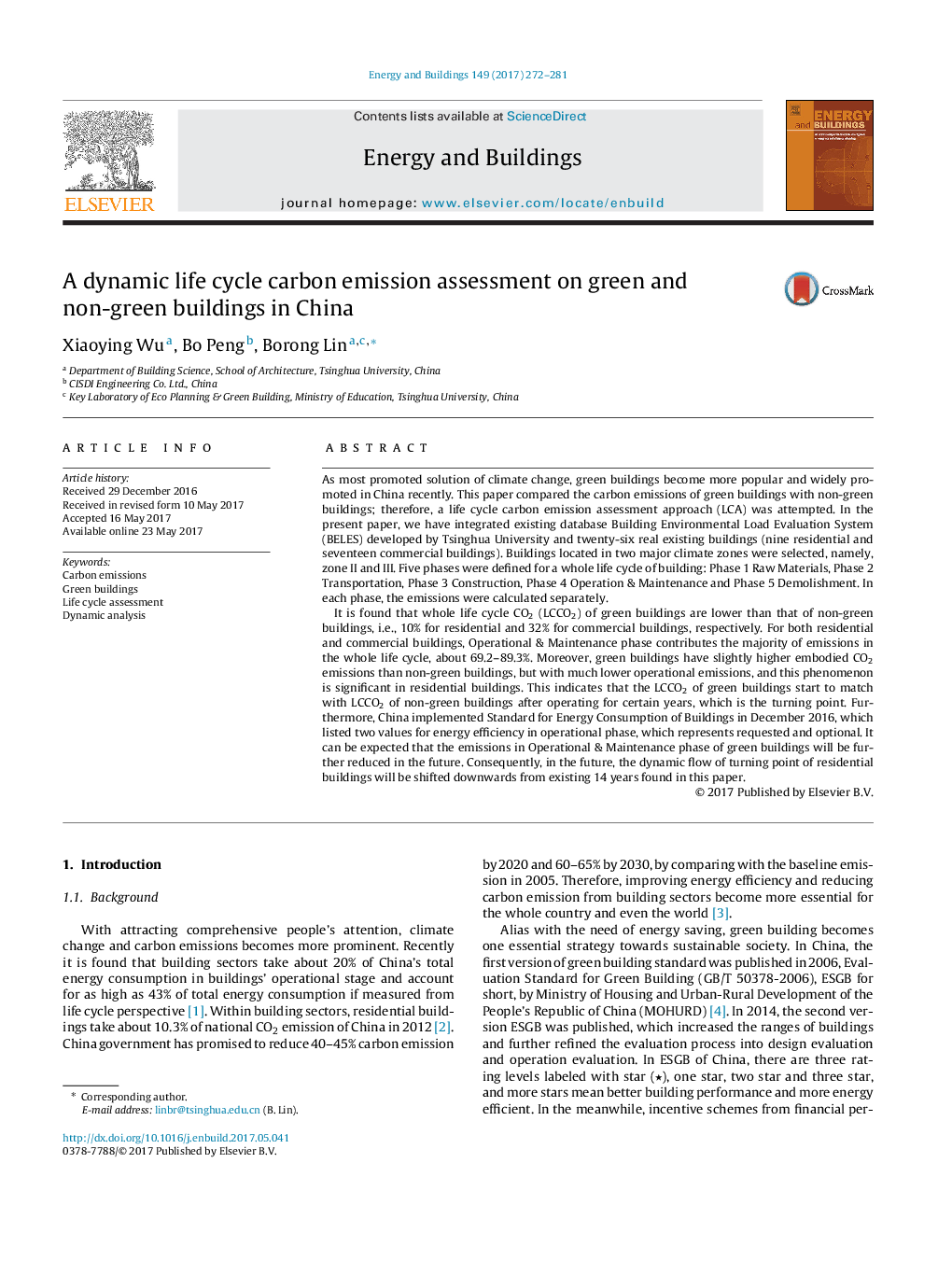| Article ID | Journal | Published Year | Pages | File Type |
|---|---|---|---|---|
| 4919116 | Energy and Buildings | 2017 | 10 Pages |
Abstract
It is found that whole life cycle CO2 (LCCO2) of green buildings are lower than that of non-green buildings, i.e., 10% for residential and 32% for commercial buildings, respectively. For both residential and commercial buildings, Operational & Maintenance phase contributes the majority of emissions in the whole life cycle, about 69.2-89.3%. Moreover, green buildings have slightly higher embodied CO2 emissions than non-green buildings, but with much lower operational emissions, and this phenomenon is significant in residential buildings. This indicates that the LCCO2 of green buildings start to match with LCCO2 of non-green buildings after operating for certain years, which is the turning point. Furthermore, China implemented Standard for Energy Consumption of Buildings in December 2016, which listed two values for energy efficiency in operational phase, which represents requested and optional. It can be expected that the emissions in Operational & Maintenance phase of green buildings will be further reduced in the future. Consequently, in the future, the dynamic flow of turning point of residential buildings will be shifted downwards from existing 14 years found in this paper.
Related Topics
Physical Sciences and Engineering
Energy
Renewable Energy, Sustainability and the Environment
Authors
Xiaoying Wu, Bo Peng, Borong Lin,
